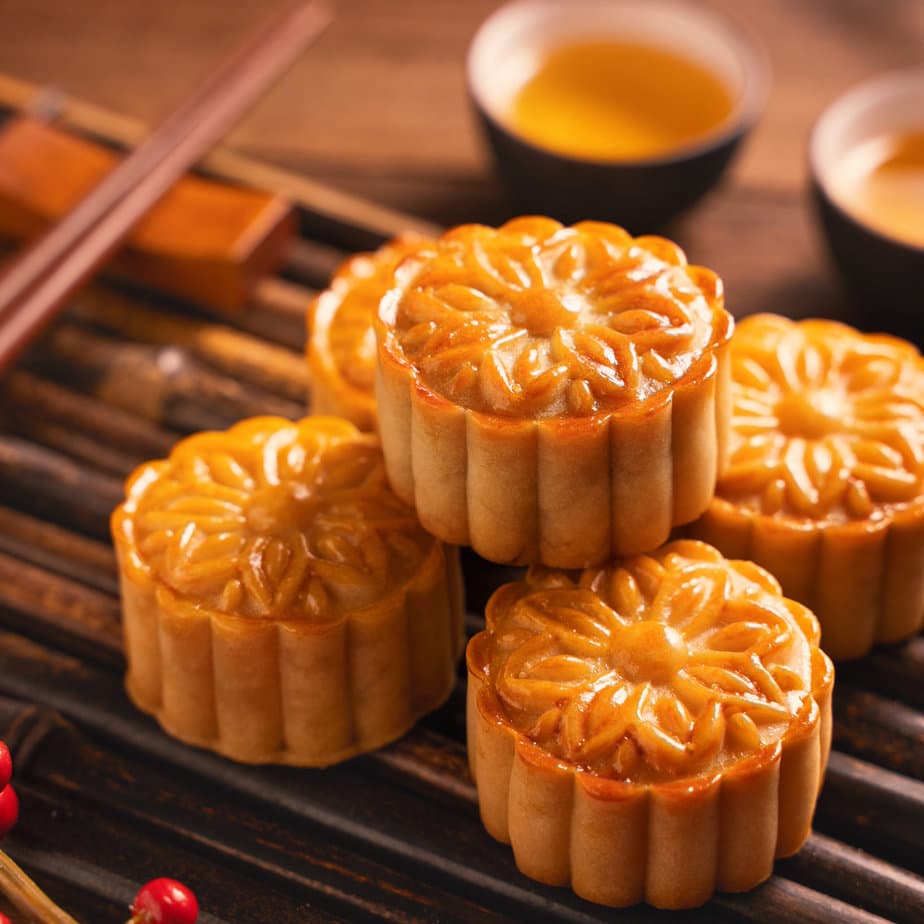
Servings: 10 mini mooncakes
Calories: 136kcal
Equipment
Ingredients
Dough
- 60 g corn syrup
- 0.25 teaspoon alkaline water
- 24 g vegetable oil
- 100 g wheat flour
Filling
- 220 g lotus paste or other filling such as taro paste
- salted eggs optional
Egg Wash
- Egg yolk, for brushing
Alkaline Water
- 5 g baking soda
- 20 g water
Procédé
Make the alkaline water
- Stir the baking soda into the water.5 g baking soda, 20 g water

Make the dough
- In a bowl, gently mix the syrup, alkaline water, and vegetable oil.60 g corn syrup, 0.25 teaspoon alkaline water, 24 g vegetable oil
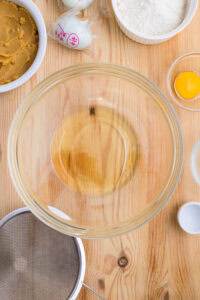
- Sift the flour and add it to the bowl all at once.100 g wheat flour
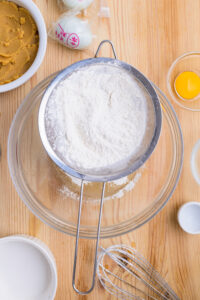
- Mix until just combined.
- Wrap the dough in plastic wrap and chill for 30 minutes.
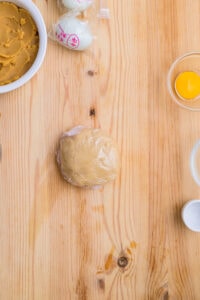
Prepare the filling
- Divide the taro or lotus paste into equal portions.220 g lotus paste
- Roll each portion into a ball and set aside.

- If using salted eggs, gently press a salted egg yolk into a paste ball, then wrap it carefully and evenly so there’s no gap between the paste and the yolk. Aim for an even layer of lotus paste around the yolk to keep it centered in the mooncake.salted eggs

Assembly
- Divide the dough into equal portions.
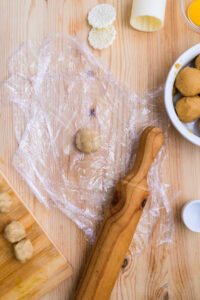
- Flatten the dough between two sheets of plastic or plastic wrap.
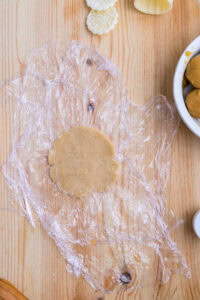
- Remove the top layer of plastic wrap.
- Place a ball of filling in the center.
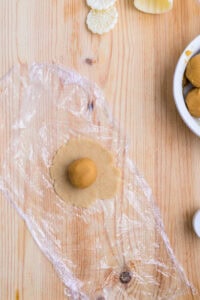
- Fold the dough up and over the filling.
- Trim any excess dough where it overlaps to ensure an even thickness.
- Roll the mooncake between your palms to form a smooth ball.
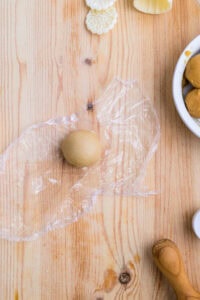
Baking
- Roll the mooncake on a lightly floured surface.
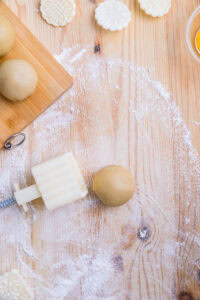
- Dip the mold plunger in flour, then tap off the excess.
- Place the dough on the baking sheet.
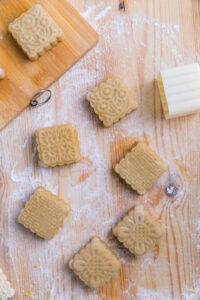
- Place the mooncake mold over the dough and press the plunger down.
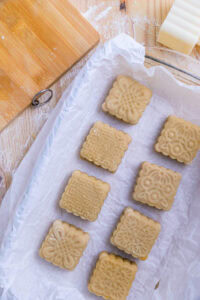
- Bake at 175°C on the middle rack for 5 minutes, or until the surface starts to set.
- Remove the mooncake from the oven and brush the surface with egg yolk.Egg yolk, for brushing
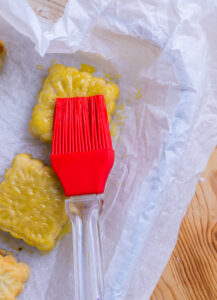
- Bake for another 10 minutes, or until golden.
- Remove the mooncake from the oven and let cool to room temperature.
- Transfer the mooncake to an airtight container and store for 3 days.
Notes
If making taro or lotus paste at home, cook it longer in the wok to evaporate excess moisture; it should be quite thick.
Note: store-bought paste (taro/lotus/red bean/sesame) can also be too runny. Heat it in a saucepan, stirring constantly, until it thickens to a modeling-clay consistency.
Nutrition
Calories: 136kcal | Féculents: 26g | Protein: 2g | Fat: 2g | Saturated Fat: 0.4g | Polyunsaturated Fat: 1g | Monounsaturated Fat: 1g | Graisses trans: 0.02g | Sodium: 137mg | Potassium: 14mg | Fiber: 1g | Sugar: 15g | Vitamin C: 0.03mg | Calcium: 6mg | Iron: 1mg
As-tu réalisé cette recette ?Tague @marcwiner sur Instagram !